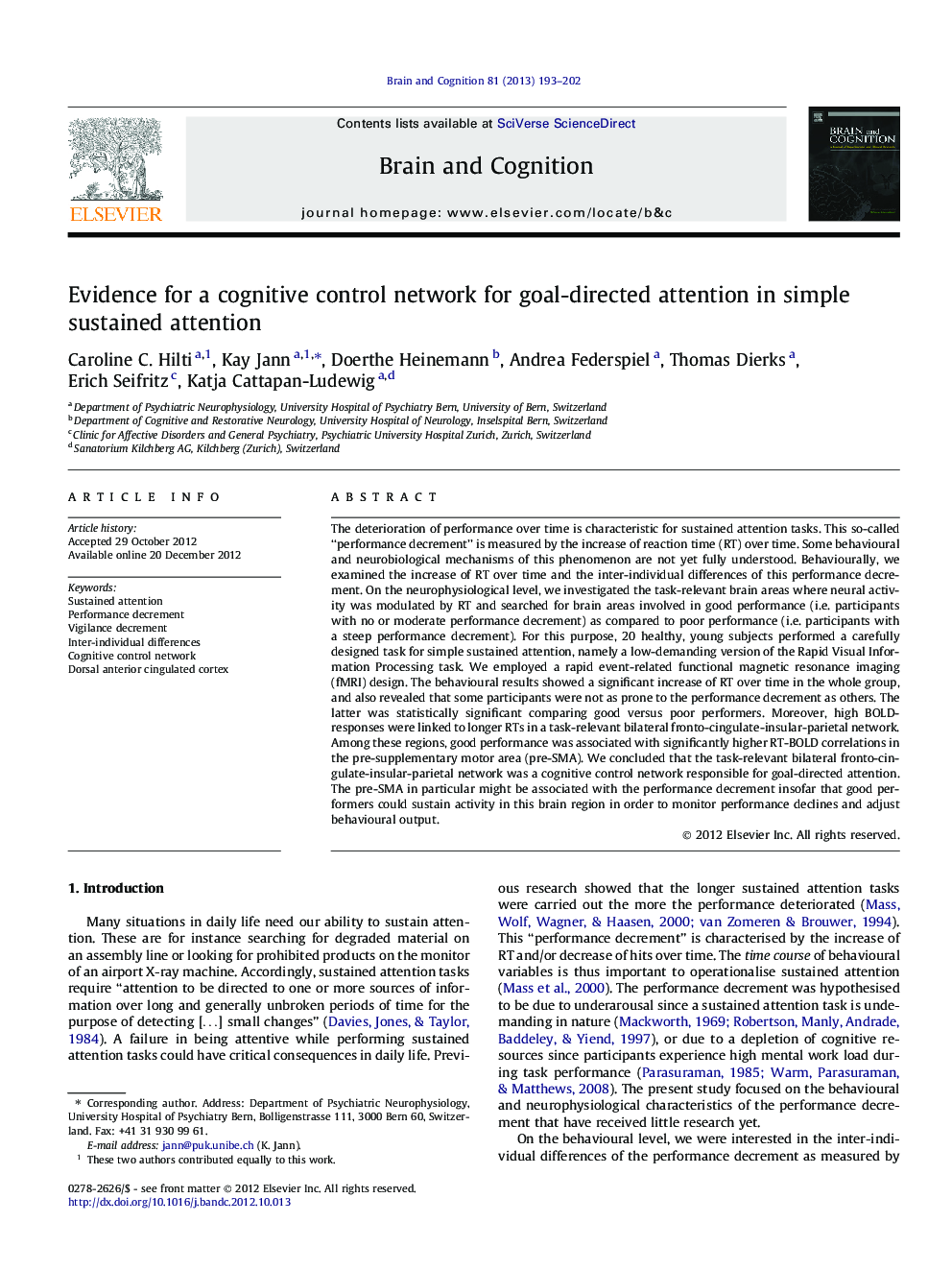| Article ID | Journal | Published Year | Pages | File Type |
|---|---|---|---|---|
| 924102 | Brain and Cognition | 2013 | 10 Pages |
The deterioration of performance over time is characteristic for sustained attention tasks. This so-called “performance decrement” is measured by the increase of reaction time (RT) over time. Some behavioural and neurobiological mechanisms of this phenomenon are not yet fully understood. Behaviourally, we examined the increase of RT over time and the inter-individual differences of this performance decrement. On the neurophysiological level, we investigated the task-relevant brain areas where neural activity was modulated by RT and searched for brain areas involved in good performance (i.e. participants with no or moderate performance decrement) as compared to poor performance (i.e. participants with a steep performance decrement). For this purpose, 20 healthy, young subjects performed a carefully designed task for simple sustained attention, namely a low-demanding version of the Rapid Visual Information Processing task. We employed a rapid event-related functional magnetic resonance imaging (fMRI) design. The behavioural results showed a significant increase of RT over time in the whole group, and also revealed that some participants were not as prone to the performance decrement as others. The latter was statistically significant comparing good versus poor performers. Moreover, high BOLD-responses were linked to longer RTs in a task-relevant bilateral fronto-cingulate-insular-parietal network. Among these regions, good performance was associated with significantly higher RT-BOLD correlations in the pre-supplementary motor area (pre-SMA). We concluded that the task-relevant bilateral fronto-cingulate-insular-parietal network was a cognitive control network responsible for goal-directed attention. The pre-SMA in particular might be associated with the performance decrement insofar that good performers could sustain activity in this brain region in order to monitor performance declines and adjust behavioural output.
► The RVIP 0 is a pure and good task to measure simple sustained attention. ► A significant increase of reaction time over time, i.e. the performance decrement, is visible. ► Single participants differ considerably in regard to the change of RT over time. ► A fronto-cingulate-insular-parietal network is responsible for goal-directed attention. ► Persisting activity in the pre-supplementary motor area results in good performance.
